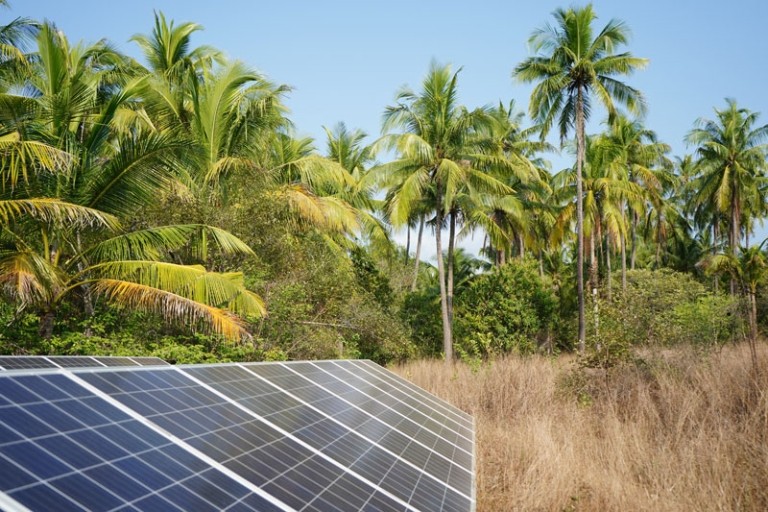Blog
Pandemic priorities: Is access to energy one of them?

The huge disruption caused by the Covid-19 pandemic has highlighted how much modern societies rely on electricity. Millions of people are now confined to their homes, resorting to teleworking to do their jobs, e-commerce sites to do their shopping and streaming video platforms to find entertainment. A reliable electricity supply underpins all of these services, as well as powering the devices most of us take for granted such as fridges, washing machines and light bulbs. Covid-19 has also revealed how dependent our health system is on energy.
An estimated 400 million people depend on health facilities that have little or no access to electricity in sub-Saharan Africa and South Asia. A World Health Organization (WHO) review revealed that one in four health facilities in sub-Saharan Africa had no access to electricity, while only 28 percent of health facilities and 34 percent of hospitals had what could be called “reliable” access to electricity (without prolonged interruptions in the past week). Rural Health Statistics 2018 data showed nearly 40,000 government health facilities which serve an estimated 580 million people in rural India are still operating without electricity supply.
Even when health facilities are connected to the grid, many suffer frequent power outages. WHO estimates that nearly 70 percent of medical devices used in developing countries (which are sensitive to voltage fluctuations) fail, with poor power quality a major contributing factor. Imagine the impact of power deficiencies on the provision of health care. Health workers struggle to work in near-darkness, relying on kerosene lanterns, candles and cell phones. Medical equipment dependent on electricity lies dormant. Storage of vaccines or medications reliant on refrigeration and blood banking becomes impossible.
Electricity is critical for operating ventilators and other medical equipment in the hospitals treating the soaring numbers of sick people. There is an urgent need for back-up power solutions at hospitals throughout sub-Saharan Africa and South Asia to ensure that these facilities can adequately treat Covid-19 patients. Diesel generators are in most cases the cheapest and fastest solution, but the pollution from such systems can be detrimental to the health of Covid-19 patients.
In such an unsettling and rapidly evolving situation, electricity also ensures the timely communication of important information between governments and citizens, and between doctors and patients. Access to energy is also crucial for communications. In Rwanda, for example, once people obtain access to energy, their first purchase is usually a TV, radio and mobile phone. In the middle of a pandemic, just having access to information such as the nature of the virus, what to do to protect yourself and maintaining awareness of government actions can be lifesaving. In communities without access to energy, people who own a mobile phone have to charge their device outside of their homes, creating additional risks of infection.
Pact is committed to improving health outcomes through electrification. Through the Yaung Chi (radiance) project in Myanmar, funded by Chevron, Pact is working to electrify 33 rural health clinics in a part of the Mandalay region that has no connection to the national utility grid. The most appropriate near-term solution for powering rural health clinics is usually a portable solar+storage system, which are affordable, easy to install, simple to use and durable. Such systems consist of a small solar panel to generate electricity and lithium-ion batteries to store electricity for use at night. Several companies also manufacture specialized solar products, such as the WeCare solar suitcase, which provides basic lighting and medical equipment to improve maternal and neonatal health in particular.
Pact is also beginning to think long-term about how to support global health partners to deliver a vaccine for Covid-19 once it is developed. Most vaccines need to be kept between 2 and 8 degrees Celsius. Without access to energy, the ability to deliver a future Covid-19 vaccine will prove challenging. In Tanzania, for example, 48.5 percent of health facilities do not comply with the storage temperature suggested by WHO standards. This affects the ability of health systems to benefit from access to vaccines. Several companies manufacture solar-powered vaccine refrigeration units that could be deployed quickly and affordably.
Over the long term, however, rural health clinics will require a (reliable) grid connection or a micro-grid solution. While our focus should be on meeting the immediate challenges of this pandemic, this can also be an opportunity to expand access to affordable, reliable and sustainable energy for health care facilities that will have a long-lasting impact on improving health outcomes.